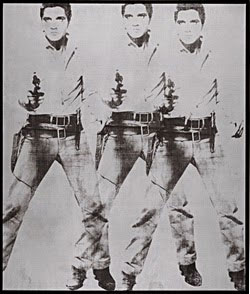Two seminal paintings by Andy Warhol from the 1960s “Triple Elvis [Ferus Type]” from 1963 and “Four Marlons” from 1966, will be put up for sale at Christie’s Rockefeller Center auction house on Nov. 12. While Brett Gorvy, Christie’s worldwide chairman of postwar and contemporary art, is cautiously estimating the paintings could bring $140 million together, he added that each has the potential to top the $100 million mark, perhaps even outperforming Warhol’s “Silver Car Crash (Double Disaster),” a two-panel painting from 1963, which brought $104.5 million at Sotheby’s in November.
Of the two, “Marlon speaks to a younger audience, because there is a very raw sexuality to the image,” Mr. Gorvy said. “He’s the person every young actor wants to be.”
For years, dealers and auction house experts have courted officials at WestSpiel, the German casino company that owned the paintings. Controlled by the German government, WestSpiel runs six casinos; the paintings had been hanging in its casino in Aachen since the late 1970s. “They were originally purchased for the décor of the casino,” Lothar Dunkel, WestSpiel’s managing director, said in a telephone interview.
Five years ago, when officials realized just how valuable the paintings were, they came down off the walls and were placed in storage for safekeeping.
“We have thought about this long and hard and believe now is the time to sell,” Mr. Dunkel said. The art market’s strength is one reason.
Thomas Ammann, a Swiss art dealer who died in 1993, sold both paintings to WestSpiel in the late ’70s. The company paid around $85,000 for the Presley and about $100,000 for the Brando, according to Mr. Gorvy.
The paintings have never been at auction before, but among Pop Art images, they are about as celebrated as any. “Four Marlons,” based on a film still from the 1953 movie “The Wild One,” shows Brando in a leather jacket leaning forward on his motorcycle looking cool and seductively composed.
“Triple Elvis [Ferus Type]” shows the singer in three overlapping images — Warhol’s way of creating the feeling of movement — taken from a publicity shot for his 1960 movie “Flaming Star,” with his legs apart, pointing a gun at the viewer. Nearly 7 feet tall and 6 feet wide, it was an impressive presence when first shown at Warhol’s 1963 solo show at the Ferus Gallery in Los Angeles.
